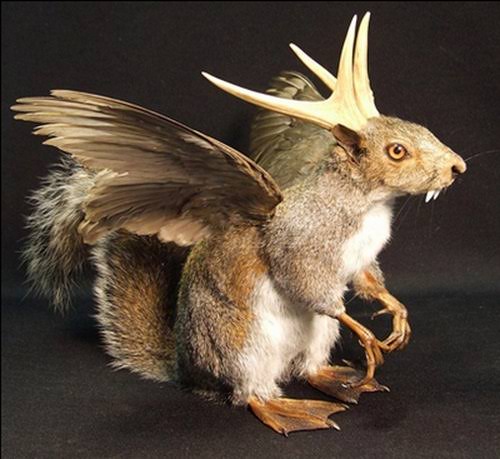Q: "Is there some niche that this wolpertinger would be able to fill?"
Evolution does not create Swiss army knives
If you talk "niche" you imply specialisation. This animal is not specialized, it is a small rodent animal that can apparently climb, swim, fly and fight. When evolution would choose either of these paths, other features would shrink, weaken and disappear.
Mutually exclusive features make life difficult
Duck feet are useless when antlers would inhibit your Wolpertinger to swim. Your tree climbing Wolpertinger needs nails, instead of duck feet. In trees, it will need a good tail for balance, but same time, the tail would inhibit a squirrel to fly, even if it had wings. When your animal would seek food like hares do, bipedalism and wings would not come in handy, so nature would choose either direction, not both.
Nature would undo unfit additions
New, but failed/superfluous new features are removed quite easily. Your Wolpertinger having a mutation that removes the antlers, would have a greater chance to survive anyway, because the animal has no use for antlers.. the new variant does not have to invest the energy to grow and carry them. Similarly, a mutation that restores squirrel-like feet to the chimaera would result in easier survival on land.
You can't have it all.

